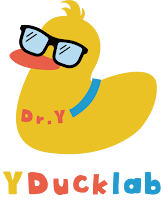Strategy for the Hypercompetitive Era: You Must Overturn the Status Quo to Survive!
In the era of hypercompetition, businesses cannot simply wait for a "home run." Instead, they must focus on getting the leadoff hitter on base, followed by sacrifice bunts, stolen bases, and consistent hits to advance their position.
Success comes from disrupting the status quo and shaking the foundations of the existing game. By doing so, companies can create temporary advantages, adapt to rapid changes, and ultimately win in a constantly evolving competitive environment.
 |
|
Richard D’Aveni: Background and Contributions
Richard D’Aveni received his Ph.D. in Management from Columbia University and served as a professor at Dartmouth College's Tuck School of Business. In 2017, he received the Thinkers50 Distinguished Achievement Award and the A.T. Kearney Award from the Strategic Management Society. In 2020, he was inducted into the Thinkers50 Hall of Fame. (He retired in 2022.)
D’Aveni criticized traditional strategy theories for assuming fixed rules of competition, arguing that they fail to address dynamic and chaotic market environments. His works, inspired by chaos theory and economics, introduced dynamic strategy models to reflect the ever-changing nature of competition.
1. Introduction
The theory of hypercompetition was introduced by D’Aveni in his 1994 book, Hypercompetition: Managing the Dynamics of Strategic Maneuvering. He highlighted how companies face significant challenges in maintaining sustainable competitive advantages in rapidly changing markets.
While traditional models like Michael Porter’s Five Forces assume stable competitive environments, D’Aveni argued that such approaches fail to explain the realities of fast-paced, unpredictable markets.
Hypercompetition is defined as a market environment characterized by rapid change, uncertainty, and unpredictability. Technological innovation, globalization, and changing consumer demands drive this environment, requiring companies to focus on creating temporary advantages rather than relying on long-term strategies.
D’Aveni compared this dynamic to a baseball game where the opposing team’s ace pitcher won’t give the batter a perfect pitch—companies must adapt, act quickly, and not just rely on a “home run” opportunity.
2. Core Concepts
Four Areas of Competition
To succeed in hypercompetitive environments, D’Aveni proposed strategies across four critical areas:
- Cost and Quality: Achieve both low costs and high quality to gain an edge in the market.
- Timing and Intensity: Gain competitive advantage through timely market entry and rapid responses to changes.
- Strong Disruption and Broad-Based Attack: Target weaknesses of incumbents while redefining market rules.
- Reorganization and Capability Enhancement: Build a flexible organizational structure to adapt quickly to changes.
These four areas require continuous, iterative action to ensure survival in dynamic environments.
7S Dynamic Strategy
D’Aveni emphasized that companies must constantly disrupt the market and existing competitive rules to maintain an edge. The 7S Dynamic Strategy Framework guides companies to systematically create market confusion and emerge as leaders.
- Stakeholder Satisfaction: Fulfill the expectations of key stakeholders (e.g., customers, investors, employees) to build trust and secure long-term support.
- Strategic Soothsaying: Predict future market trends and identify opportunities to gain competitive advantages, especially through technological and consumer insights.
- Positioning for Speed: Act faster than competitors by making agile decisions and maintaining a flexible organization.
- Positioning for Surprise: Shock the market by taking unexpected actions, such as disruptive innovations that redefine rules.
- Shifting the Rules: Change or nullify existing market rules to create new opportunities, as seen in platform economies and innovative business models.
- Signaling Strategic Intent: Clearly communicate intentions to competitors and markets to control the direction of competition.
- Simultaneous and Sequential Strategic Thrusts: Execute multiple strategies simultaneously or sequentially to create confusion and gain dominance.
3. Examples of 7S in Action
- Tesla: Tesla redefined the automotive industry by shifting the rules with electric vehicles and autonomous driving technology.
- Netflix: Netflix disrupted the DVD rental market by introducing streaming services and dominating through speed and innovation.
- Apple: Apple positioned for surprise by consistently launching revolutionary products, such as the iPhone, which left competitors and consumers in awe.
- Uber: Uber shifted the rules of the taxi industry by creating a platform-based sharing economy.
- Amazon: Amazon positioned for speed through fast delivery and supply chain innovations, becoming a global leader.
- Xiaomi: Xiaomi applied a cost-and-quality strategy by offering high-quality electronic products at affordable prices, pressuring competitors.
4. Application of 7S
Companies can leverage the 7S framework to sustain growth and differentiation in hypercompetitive environments:
- Market Forecasting: Use AI and data analytics to predict changes in consumer behavior and market dynamics.
- Organizational Flexibility: Design structures that enable rapid execution of new strategies.
- Continuous Innovation: Improve existing products or create entirely new markets.
- Strategic Signaling: Communicate clear intentions to stakeholders and competitors to shape market dynamics.
- Focus on Short-Term Gains: Abandon the pursuit of long-term sustainable advantages and instead maximize temporary advantages.
- Customer-Centric Strategy: Quickly adapt to consumer needs by launching and iterating new products.
- Technology Utilization: Drive competitive advantage through digital transformation and automation.
5. Limitations and Criticisms
While the 7S Dynamic Strategy is a practical framework, it has some limitations:
- Resource Demands: Simultaneously implementing multiple strategies requires significant resources.
- Organizational Fatigue: Rapid and continuous changes can overwhelm employees and management.
- Industry Restrictions: The framework may not apply in industries with monopolistic or highly regulated environments.
- Implementation Challenges: Quantifying and assessing the success of the 7S framework can be difficult, making practical execution more complex.
6. Future Directions
The 7S Dynamic Strategy framework can be further enhanced through advancements in digital transformation and AI technology. Tools like predictive analytics and machine learning can strengthen Strategic Soothsaying, enabling better forecasting of market trends.
Additionally, as globalization and platform-based economies expand, the framework’s emphasis on shifting rules and creating new competitive dynamics becomes increasingly relevant.
긴 글 읽어주셔서 감사드립니다.
한글 버전을 원하시면 "여기"를 방문해 주세요
긴 글 읽어주셔서 감사드립니다.
한글 버전을 원하시면 "여기"를 방문해 주세요







0 댓글